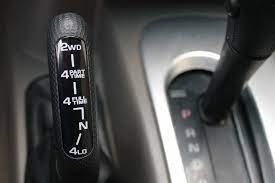Platinum is very important in a catalytic converter, which in overall play essential role in a car. Before now a lot of car owners does not know what is platinum and also the worth and the role in the car. We will want to start with what it is and the role it plays in a car.
Why platinum is used in fuel cell?
A fuel cell needs platinum for the catalyst that separates hydrogen into protons and electrons, which then generate the electrical current, making it an alternative to battery-powered vehicles. Hydrogen fuel cells are expected to be an important part of reducing global carbon emissions, though they remain expensive.
What is the role of platinum in catalytic converters?
The role of platinum in catalytic converter is to oxidise carbon monoxide (CO) and hydrocar- bons. Platinum is particularly effective at this under oxygen-excessive conditions, so is often the metal of choice for diesel applications.
What is platinum used for?
Platinum is used in catalytic converters, laboratory equipment, electrical contacts and electrodes, platinum resistance thermometers, dentistry equipment, and jewellery
Platinum plays a vital role in catalytic converters.
It oxidizes the hydrocarbons and carbon monoxide present in the converter in the presence of sufficient oxygen. Due to its property as an oxidizing agent, the metal platinum is commonly used in diesel applications.
Both Palladium and platinum are the most effective metals for petrol-powered automobiles where there is a balance between oxidants and resultants in the exhaust gas, so in most cases, the choice on which to use is based on the most cost-effective.
How Much Platinum is in a Catalytic Converter?
The amount of platinum available in the catalytic converter can vary significantly based on the model and the manufacturer. But on average, there are between 3 to 7 grams of platinum in a standard catalytic converter, but it varies from model to model and manufacturer.
The three-way catalyst used in petrol cars should reduce the NOx to nitrogen element and CO to hydrocarbons; this explains why rhodium can also be used apart from just Palladium and platinum.
Although other transition elements can catalyze oxidation reactions, platinum has several benefits. The benefits or advantages include
- Platinum has a high melting point.
- Platinum’s interactions with poisons like sulfur compounds are limited to the mental surface.
- Platinum is recyclable, and so it can efficiently be recycled.
While its melting point might seem irrelevant since platinum will never be near that temperature range while in use, it does not signify its general thermal durability.
The metal in the catalytic converter is in the form of nanoparticles. These particles often disperse when on a highly porous support compound or element. The particles start mobilizing and coalescing as the catalyst temperature increases.
This process is known as sintering and can become noticeable when the metal reaches Tammann temperature, which is the temperature at which the bulk mobility of the metal elements becomes measurable.
This temperature at which the mobility of the particles becomes measurable is assumed to be half of the metal’s melting point on the absolute temperature scale.
Moreover, metals like copper and silver have a high affinity for sulfur-containing elements and react with them to form compounds. When this transpires, there will be less metal for reactions.
Platinum is unique as it resists being fully poisoned. For instance, the sulfur-containing compounds inhibit instead of poisoning platinum-based catalysts.
How Much Platinum Can be Recovered from a Catalytic Converter?
Platinum is considered the most valuable metal than other metals such as silver and gold. It has properties that are closely the same as that of gold, being ductile and malleable. As well, platinum has the property of being resistive to corroding.
Although platinum is valuable, what defines itself from other metals is its rarity. In other words, its quality is high and far compared to gold and silver.
In its existence, in every 15 gold, there is only one platinum which means acquiring it is pretty difficult. To get pure platinum amounting to 1 ounce, you need ten tons of platinum raw ore.
In the extraction of platinum from a catalytic converter, only (three to seven) grams of platinum can be recovered. The cost of these grams of platinum can range between $100 to $237, although the price varies depending on several factors.
Which Cars Have the Most Platinum in Their Catalytic Converters?
The Toyota Prius is the most targeted car for catalytic converter theft. As a low-emissions vehicle, Prius converters contain larger amounts of the precious metals platinum, rhodium, and palladium. Thieves can fetch as much as $700 per converter from unscrupulous scrap yards.
Do all Catalytic Converters Contain Platinum?
Nowadays, platinum price per gram is around $41. … Although the quantities vary by model, on average, only one standard catalytic converter contains about 3-7 grams of platinum, 2-7 grams of palladium, 1-2 grams rhodium. That provides serious gains when tons of scrap catalytic converters are recovered.
Are Diesel Catalytic Converters Worth Anything?
Diesel catalytic converters come from diesel engines. A lot of times the diesel engine cats are not worth too much money due to the lack of precious metals inside like platinum, palladium, and rhodium. However, there are some diesel cats that are worth a decent amount of money.
How do you Extract Platinum from a Catalytic Converter?
To remove the platinum coating on the catalyst pieces, the catalyst pieces must be removed from the converter. This is done simply by turning up the catalytic converter lengthwise and pounding on one end with a blunt instrument until the catalyst pieces start to fall out of the lower, open end of the converter.
What Car has Most Catalytic Converters?
The vehicles that have most catalytic converter are: Toyota Prius, SUV’s of all makes, Pick up Trucks of all makes, van’s (mostly Honda), passenger cars (mostly Honda), 2 U-Haul trucks. Gov. Roy Cooper recently signed a bill that makes catalytic converter theft a felony.
The next most expensive catalytic converter is a bit closer to home. The Dodge Ram 2500 comes in at $3,460.00. The Ford F250 (similar to the Dodge 2500 in terms of towing and strength) is a mere $2,804.
Read Also: Symptoms of a Bad Transmission
Where Does Platinum Come From?
The most producers of platinum in the world are Southern Africa, North America, and Russia, with South Africa and Canada being leading platinum producers with 80%.
What Kind of Metal is Platinum?
Platinum is a silvery chemical element and member of the six transition compounds in group viii in the periodic table. It belongs to a group of platinum metals: rhodium, osmium, platinum, ruthenium, rhodium, and iridium.
The metal has the symbol Pt, atomic number seventy-eight with an atomic weight of 195.09. It is heavy, precious, soft, malleable, and silver-white metal with a high melting point.
Where is Platinum Found?
Platinum originates from the earth’s crust from the ultramafic igneous gemstones. It is associated with gemstones such as olivine and chromite. The metal is found as grains and nuggets, and its pure nature is unknown since well-formed platinum crystals are rare to find.
Why is Platinum so Expensive?
Platinum becomes so expensive because it is a precious metal, and precious metals are priced by weight. Since platinum is heavier or denser than gold, it becomes so expensive.
The other reason is that platinum is more valuable than gold since it is a rare metal to find. Moreover, the extraction process for platinum is more expensive than other metals.
This is because platinum has a higher melting point, making its extraction expensive due to the high amount of energy required to extract it.
Additionally, there has been a higher demand for heavy-duty Chinese vehicles which has, in turn, increased the demand for platinum, increasing its value day by day.
There are the 3 most leading failures of a catalytic converter which are listed below:
We want to look at these three common causes of catalytic converter problems.
- Unburned Fuel. Heat can be damaging to almost any engine component, so it’s no surprise that it’s one of the most common causes of catalytic converter failure.
- Coolant Leaks.
- Oil Consumption.
How Much Gold is in a Catalytic Converter?
Catalytic converters contain Platinum, Rhodium and Palladium. However, there is no gold in catalytic converters as people may think. Content will vary significantly depending on the vehicle model, but on average the ceramic weight is approximately just less than 1 kg, and the precious metal content is between 0,2% and 0,5% respectively.
Why is Catalytic Converters Worth so Much Money?
If catalytic converter does not contain gold, why does if worth so much money? The reason there is a price difference, which is because of the precious metals it has inside. There are many precious metals that clean the air that passes through the catalytic converter and those metals is what makes it worth money. Therefore, the precious mental nature of catalytic converter is what made it worth much more.







